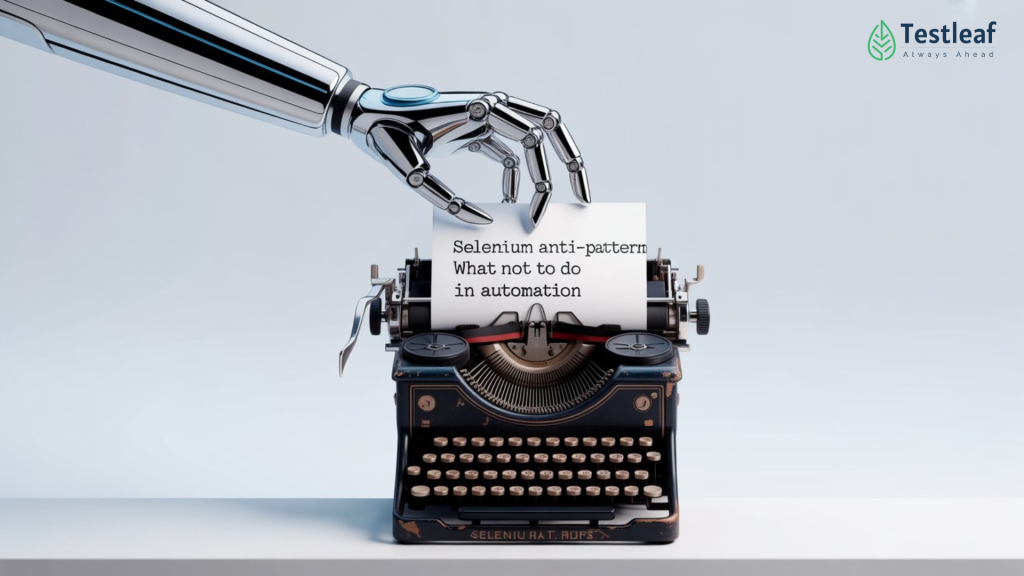Automation testing with Selenium has revolutionized how QA teams validate web applications. It’s powerful, flexible, and widely supported—but like any tool, its success depends on how it’s used. Unfortunately, many testers unknowingly fall into Selenium anti-patterns that reduce efficiency, make scripts harder to maintain, and increase test flakiness.
If you’re considering Selenium training in Chennai or already enrolled in a Selenium course, understanding these common mistakes will save you countless hours of frustration.
What Are Selenium Anti-Patterns?
An anti-pattern is a practice that might seem helpful at first but ends up being counterproductive. In Selenium automation, anti-patterns often result in unstable tests, long execution times, and code that’s hard to debug or reuse. Recognizing them early ensures you build a more robust automation framework.
1. Hardcoding Values and Locators
One of the most frequent mistakes is hardcoding test data or element locators directly into scripts.
Why it’s a problem:
- Any change in the application UI breaks multiple scripts.
- Test data cannot be reused across different test scenarios.
Better approach:
- Store locators in a dedicated file or object repository.
- Use external data sources (CSV, Excel, JSON, or database) for test inputs.
Recommended for You: automation testing interview questions
2. Ignoring Explicit Waits
Using only Thread.sleep() for delays might seem quick to implement, but it’s unreliable.
Why it’s a problem:
- Slows down test execution unnecessarily.
- Causes intermittent failures when network or server response time changes.
Better approach:
- Use Selenium’s explicit waits (WebDriverWait with ExpectedConditions) to handle dynamic elements gracefully.
3. Writing Monolithic Test Scripts
Some beginners—especially those new to Selenium—write long scripts that test multiple functionalities in one go.
Why it’s a problem:
- Difficult to maintain or debug.
- A single failure can invalidate multiple test results.
Better approach:
- Follow modular test design.
- Keep tests focused on a single scenario or functionality.
4. Skipping Page Object Model (POM)
Page Object Model is a design pattern that separates test logic from UI locators. Yet, many skip it to save time.
Why it’s a problem:
- UI changes require major script rewrites.
- Code becomes repetitive and harder to read.
Better approach:
- Implement POM to improve code reusability and maintainability.
5. Lack of Proper Test Data Management
Poor data handling leads to unpredictable results and flaky tests.
Why it’s a problem:
- Tests may fail due to outdated or inconsistent data.
- Difficult to replicate issues in different environments.
Better approach:
- Use dynamic test data generation where possible.
- Maintain separate data sets for staging, development, and production environments.
Other Helpful Articles: 5 benefits of Selenium Webdriver
6. Overlooking Browser Compatibility Testing
Selenium supports multiple browsers, but many teams test only in Chrome.
Why it’s a problem:
- Bugs in Firefox, Edge, or Safari go undetected until late in the cycle.
Better approach:
- Use Selenium Grid or cloud testing platforms to run cross-browser tests regularly.

How Selenium Training in Chennai Can Help Avoid Anti-Patterns
Whether you’re a beginner or experienced tester, structured learning plays a vital role in avoiding costly mistakes. A professional Selenium course can help you:
- Understand Selenium best practices from day one.
- Gain hands-on experience with Page Object Model, waits, and test frameworks.
- Learn advanced techniques like parallel execution and CI/CD integration.
- Get guidance from industry experts who have solved real-world automation challenges.
By enrolling in Selenium training in Chennai, you not only learn the right way to write scripts but also gain practical exposure to tools and frameworks that complement Selenium, such as TestNG, Maven, and Jenkins.
Key Takeaways
If you want stable, maintainable, and scalable Selenium automation, avoid these anti-patterns:
- Don’t hardcode locators and data—use centralized storage.
- Replace Thread.sleep() with explicit waits.
- Keep tests modular instead of writing massive scripts.
- Implement Page Object Model for better maintainability.
- Manage test data effectively.
- Test across multiple browsers regularly.
Final Word:
Selenium is an excellent tool, but its effectiveness depends on how well you implement it. Avoiding these anti-patterns will make your test automation more reliable and efficient. With the right knowledge—especially from a quality Selenium course—you’ll be able to harness Selenium’s full potential without falling into common traps.
We Also Provide Training In:
- Advanced Selenium Training
- Playwright Training
- Gen AI Training
- AWS Training
- REST API Training
- Full Stack Training
- Appium Training
- DevOps Training
- JMeter Performance Training
Author’s Bio:

As CEO of TestLeaf, I’m dedicated to transforming software testing by empowering individuals with real-world skills and advanced technology. With 24+ years in software engineering, I lead our mission to shape local talent into global software professionals. Join us in redefining the future of test engineering and making a lasting impact in the tech world.
Babu Manickam
CEO – Testleaf








